Encoding and Decoding analog and digital signals
Frequent Sewer Cleaning Equipment
September 10, 2021Necessity For CPR Certification
September 10, 2021For communication to take place both transmitting and receiving must occur successfully. Transmitting involves the sender encoding the message and transmitting it over the medium. Receiving includes the receiver understanding the organisation of the encoded message – based mostly on the protocols agreed upon during handshaking with the transmitter. The receiver can then decode the message based mostly on the rules of the agreed protocols. In essence each encoding and decoding are organising data processes. Encoding organises the data right into a form suitable for transmission alongside the communication medium. Decoding adjustments the organisation of the acquired data right into a type suitable for subsequent info processes. Previous to transmission data is encoded into a signal based on the principles of the transmission protocols being used and suited to the transmission media along which the message will travel. When messages reach their vacation spot the receiver reverses this process by decoding the signal and remodeling it back into data. Data that originates or is stored on a pc is always in binary digital form. Digital data is all data that is represented (or could possibly be represented) utilizing entire distinct numbers – in the case of computer systems a binary representation is used. Continuous data that usually originates from the real world is analogy. Each analogy and digital data will be encoded and transmitted on electromagnetic waves. Note that in reality all waves are continuous hence they are analogy. For our function, it is how we select to interpret the data carried on these analogy waves that we will use to differentiate between digital signals and analogy signals. A digital signal is being used when digital data is encoded onto an analogy wave. An analogy signal is being used when analogy data is encoded onto an analogy wave. To encode analogy data into a digital signal requires that the data first be transformed into digital utilizing an analogy to digital converter (ADC). Equally to encode digital data into an analogy signal the data have to be transformed to analogy data utilizing a digital to analogy converter (DAC).
Analogy Data to Analogy Signal
When the data is analogy the waveform varies repeatedly in parallel with the adjustments within the unique analogy data. For instance microphones acquire analogy sound waves and encode them as an infinitely variable electromagnetic wave
The voltage transmitted from the microphone varies continuously in parallel with the soundwaves entering the microphone. An analogy signal is produced as the complete analogy wave represents the unique analogy data. All points on the analogy wave have significance – this shouldn’t be true of digital signals.
Analog signals are transmitted alongtraditional PSTN telephone lines. For voice(audio) microphones are used as thecollection machine and speakers as the displaydevices. The microphone encodes the analogdata and the speaker performs the decoding process. The electromagnet within thespeaker moves out and in in response to thereceived analog signal. This causes thespeaker’s diaphragm to move in and outwhich in flip creates compression wavesthrough the air that we finally hear as sound.Traditional analog radio and analog TV are additional examples of analog datatransmitted as an analog signal – including broadcasts via air and likewise analogaudio and video cassettes (VHS). In each cases an analog signal is transmitted thatvaries continuously. This analog signal is decoded and displayed by the receivingradio/stereo or television set.
Digital Data to Digital Signal
Digital signals are produced when digital data is encoded onto analog waves. Todecode the wave and retrieve the encoded digital data requires the receiver to read thewave at the similar exact time intervals. The receiver determines the characteristics of the wave at each time interval based on the main points of the coding scheme. As aconsequence each particular waveform will be decoded back into its unique bit pattern.There are two commonly used methods for encoding digital data. The first alters thevoltage current in a circuit to symbolize completely different bit patterns. This approach is usedover short distances, including communication within a computer and between nodeson a baseband LAN. Note that altering voltage adjustments the facility or amplitude of thewave. The second alters characteristics of a relentless frequency electromagnetic wavecalled a service wave. The service wave is modified (modulated) to characterize totally different bit patterns by altering a mixture of amplitude, phase and/or frequency. Themodulation (and subsequent demodulation) process is used for most long distance broadband communication. Both the above encoding strategies create differentwaveforms (often called symbols) that represent completely different numbers (bit patterns). Thewaveforms are changed at repeatedly spaced time intervals to characterize each new pattern of bits.The time between each interval is known as the “bit time”. For instance on a100baseT Ethernet network the bit time is 10 nanoseconds. Subsequently a transmittingnetwork interface card (NIC) on a 100baseT network ejects one bit each 10nanoseconds. Similarly all receiving nodes must study the wave every 10nanoseconds. On 100baseT protocol networks a single bit is represented after every bit time using Manchester encoding. Thereceiver detects the transitions to not onlydecode the signal but in addition to remain insynchronisation with the sender.Each transition from high to low or low to high occurs over time. Subsequently the actualwave has rounded edges.
If you loved this short article and you would like to obtain more facts relating to signals intelligence kindly check out our own site.

